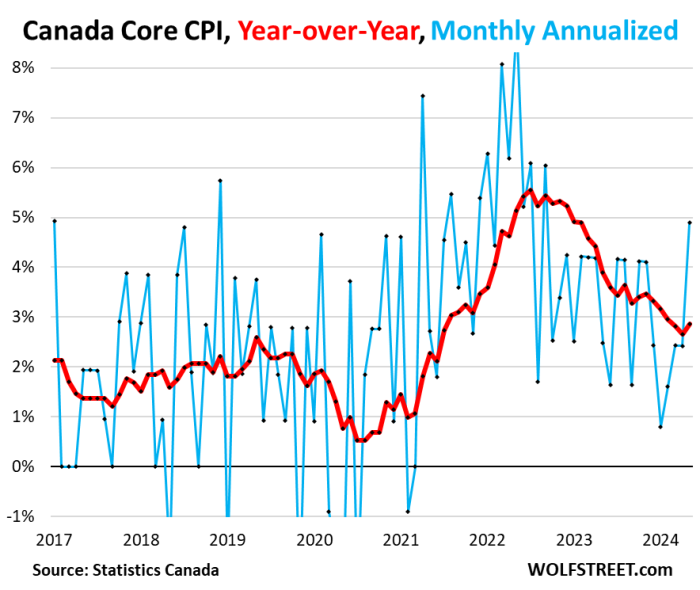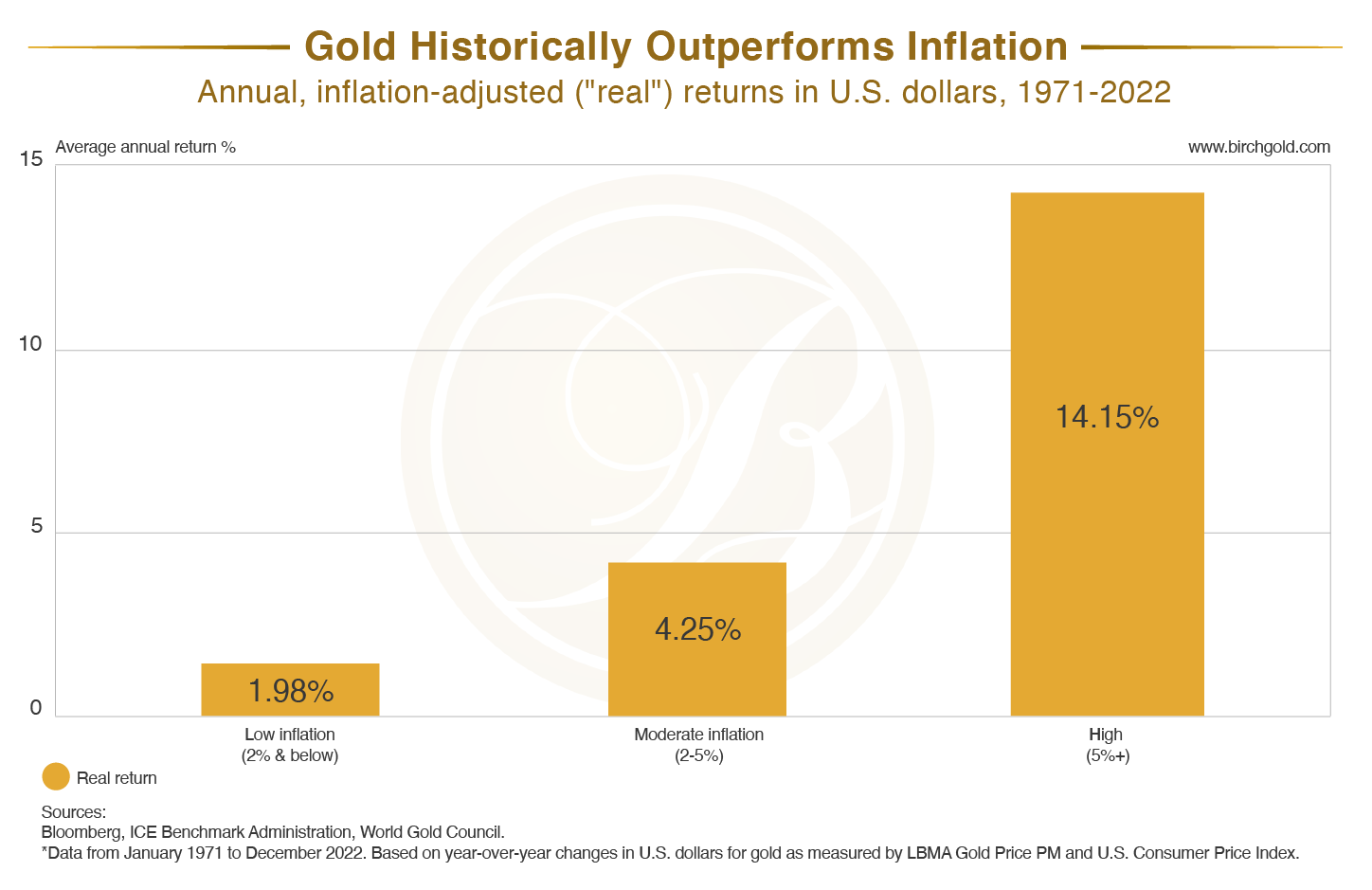The cost of credit is high, and all eyes are on the Fed these days. The economy can’t tolerate today’s interest rates, so everyone expects rate cuts – but when?
 Bullion.Directory precious metals analysis 28 June, 2024
Bullion.Directory precious metals analysis 28 June, 2024
By Peter Reagan
Financial Market Strategist at Birch Gold Group
Keep in mind that Federal Reserve Chairman Powell kept downplaying inflation as “transitory” in 2021, but also ended up wildly wrong (almost negligent).
On the other hand, we actually live in the real world with real people. So back in 2021, we thought inflation might accelerate to 10% officially, before backing off.
The result? The official inflation rate accelerated to a 9% peak in June 2022 before FINALLY starting to slow down a little.
Which brings us to the present, and a critical question to ponder: When will the rate of price increases finally cool below the Fed’s target of 2%?
Keep that question in mind as we continue…
Inflation’s too high (and so are interest rates)
As recently as March of this year, the Fed had been prepared to begin cutting the Federal funding rate. According to a Barron’s column, they “held” to a forecast of three rate cuts by the end of this year:
In the bank’s latest Summary of Economic Projections, released Wednesday after a meeting of the Federal Open Market Committee, policymakers indicated they anticipated that the benchmark federal funds rate would fall to a median of 4.6% by the end of this year. That amounts to three cuts of a quarter of a point from the current level of 5.25%-5.50%.
Unfortunately, that forecast was obliterated by a persistent inflation rate that is still hovering over 3% for one of the longest periods in economic history (since May 2021).
A recent report by CBS News revealed that Fed rate-cut forecast has dropped to one, perhaps by the end of this year:
The central bank kept the federal funds rate — or what banks charge each other for short-term loans — in a range of 5.25% to 5.5%. It has remained at that level, the highest in 23 years, since July of 2023.
The Fed has been wary of cutting rates due to stubborn inflation, which is showing some signs of easing yet remains above the central bank’s 2% annual target. Earlier on Wednesday, the government said consumer prices in May rose 3.3% on an annual basis, showing some easing from April, when the pace stood a tick higher at 3.4%.
“The fact that the Fed scaled back the number of rate cuts from three to one is going to disappoint those who were hoping for a summer rate drop,” said Bright MLS chief economist Lisa Sturtevant in an email quote captured in the same piece.
But what if a rate cut at the end of 2024 is still too soon?
As you’ll see, one country has already run that experiment…
Here’s what happens when you surrender before the fight is over
Just a few weeks ago, Governor Tiff Macklem celebrated as Canada’s central bank cut its primary funding rate by 25 basis points (0.25%), according to Reuters:
“Let’s just enjoy the moment for a bit,” said Governor Tiff Macklem at a press conference after announcing the central bank had reduced rates to 4.75% from 5%, the first cut in four years.
Economists could barely contain their excitement for another rate cut in July, according to the same Reuters report:
Some economists predicted the BoC would cut again in July even though financial markets had priced in a 39% chance of a cut to 4.50% next month.
Unfortunately, reality appears to be throwing sand in the gears, because inflation isn’t going away quietly up north, according to Wolf Richter:
“Inflation had not said its last word,” is how analysts of Economics and Strategy at the National Bank of Canada eloquently titled their inflation report today. They too were surprised.
This is the kind of surprise that the BOC – along with the Fed and the ECB – have been cautioning about. Inflation does this sort of thing. After it reaches the magnitude of the type it had reached in 2022, it doesn’t just go away quietly on its own.
Overall CPI month-to-month accelerated to 3.8% annualized, the sharpest increase since December.
Wolf’s key insight above (bolded) is similar to the insight Jim Rickards offered a few years ago, when inflation was building momentum. That momentum appears to be regaining steam after Canada cut rates just a few weeks ago.
You can see how the year-over-year Core CPI has ticked up, and the monthly annualized Core CPI has skyrocketed on Wolf’s graph below:

via WolfStreet
Will the situation play out the same way if the Federal Reserve decides to issue a rate cut later this year? Using Canada as a potential case study, it would appear that Powell has to be very careful.
Otherwise, capitulating to the “easy-money” crowd could prove to be catastrophic.
Your best option is to devote a few minutes now, towards something that will offer long-term benefits regardless of inflation…
Brush up on inflation-resistant investments
No matter what happens in the near-future, one thing is certain: The Fed is trapped. High interest rates are intolerable to debtors (including the world’s biggest debtor, the federal government).
Bad for the housing market. And bad for the millions of American families who are using credit cards to pay for groceries.
Low interest rates expand the credit supply – making debt cheaper, while at the same time devaluing the dollar’s purchasing power. We call that “inflation.”
The Fed’s hoping to thread the needle between crushing the economy and stoking yet another inflationary speculative bubble. History tells us they don’t have a good track record of this – the last five rate hiking cycles ended in recessions. So the Fed’s score is 0 for 5 so far. Not very promising!
That means it’s a good idea for you to consider educating yourself about the diversification benefits of inflation-resistant investments. One of those inflation-resistant investments (and arguably the best of them) is physical gold. That’s because physical gold consistently outperforms inflation, and has done so since 1971. When inflation is high, gold rises even higher:

Of course, you don’t want to forget about the other precious metals, either.
By making the right moves now, you have an opportunity to put yourself in a potentially better financial position for the future through proper diversification of your retirement dollars.
When you’ve diversified your savings thoroughly, you’ll be poised to weather any sort of economic storm, with the confidence that, no matter what the Fed does next week or next year, your long-term financial security is not at risk.
Peter Reagan

Peter Reagan is a financial market strategist at Birch Gold Group, one of America’s leading precious metals dealers, specializing in providing gold IRAs and retirement-focused precious metals portfolios.
Peter’s in-depth analysis and commentary is published across major investment portals, news channels, popular US conservative websites and most frequently on Birch Gold Group’s own website.
This article was originally published here











 Material provided on the Bullion.Directory website is strictly for informational purposes only. The content is developed from sources believed to be providing accurate information. No information on this website is intended as investment, tax or legal advice and must not be relied upon as such. Please consult legal or tax professionals for specific information regarding your individual situation. Precious metals carry risk and investors requiring advice should always consult a properly qualified advisor. Bullion.Directory, it's staff or affiliates do not accept any liability for loss, damages, or loss of profit resulting from readers investment decisions.
Material provided on the Bullion.Directory website is strictly for informational purposes only. The content is developed from sources believed to be providing accurate information. No information on this website is intended as investment, tax or legal advice and must not be relied upon as such. Please consult legal or tax professionals for specific information regarding your individual situation. Precious metals carry risk and investors requiring advice should always consult a properly qualified advisor. Bullion.Directory, it's staff or affiliates do not accept any liability for loss, damages, or loss of profit resulting from readers investment decisions.

Leave a Reply